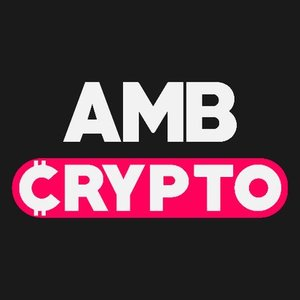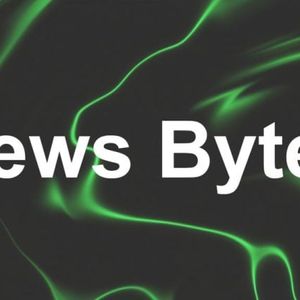Summary Marathon Digital released earnings for Q1-24 and reported a huge beat in earnings per share. The company's $337 million in quarterly net income was entirely attributable to a change in fair value accounting rules. While the company is being proactive in fee generation strategy, there are still long-term hurdles facing the business model. When I last covered Marathon Digital ( MARA ) for Seeking Alpha, I downgraded the stock from "buy" to "hold" and noted both weak stickiness in transaction fees and a stock valuation already implying a six-figure Bitcoin ( BTC-USD ) price. In the closing summary I said MARA would likely serve as a solid swing trading ticker and that has indeed been the case with the stock often moving up or down by 5% or more in a single day: Data by YCharts In this update, we'll look at the company's Q1-24 earnings report, April Production, MARA Pool data, and longer-term mining trends. Q1-24 Earnings & April Production For the period ended March 2024, Marathon Digital reported an eye-popping $1.26 EPS figure, more than a dollar better than estimates. The company grew quarterly revenue to $165.2 million from $51.1 million in Q1-23; a year-over-year increase of 223%. Q1-24 (MARA 10-Q) Somewhat surprisingly, Marathon's gross margin was actually negative by $3 million after cost of revenues surged to $168.2 million from $51.1 million in the prior year. Like many in the public mining space, Marathon Digital's numbers are benefiting from recent changes to FASB fair value accounting rules that allow the companies to show fair value of BTC holdings. Q1-24 (MARA 10-Q) This change in accounting is entirely responsible for the company's enormous $369.7 million operating income. If we take away the $488.8 million gain on digital assets in the quarter, Marathon Digital's operating income was negative by over $119 million in Q1. If we take out the unrealized capital gains on Bitcoins that were mined in previous quarters, total operating expenses were over $116 million. Adding that figure to the $168.2 million cost of revenue and then dividing the sum (roughly $285 million) by the 2,811 BTC that the company mined in a quarter gives us a back of the envelope breakeven BTC price of $101k - which is 60% premium to current Bitcoin prices. What's concerning about all this is the fact that Q1 data doesn't even include post-halving production yet. Looking at the company's monthly production trend, April doesn't actually look that bad, even though the month included 11 days of post-halving production: Author's Chart (Company filings) Part of MARA's 850 BTC mined during the month of April can be attributable to the massive spike in Bitcoin transaction fees on April 20th when the Runes protocol launched. Even though the block subsidy is down to just 3.125 BTC via new coin issuance, MARA Pool had two blocks on April 20th that combined for nearly 33 BTC. Since the start of May, MARA has mined just 1 block that has been larger than 3.7 BTC. The rest have been slightly above the block reward subsidy figure of 3.125. That said, the company is trying to extract as much from the fee market as it can muster. Slipstream & Block Fee Performance Back in February, the company announced the launch of its Slipstream service. This service essentially allows individual transactors the ability to go direct to Marathon Digital's MARA Pool for blockchain inclusion, rather than via the standard mempool where any mining pool can process the transaction. For this service, MARA Pool is able to charge a fee premium over the standard mining fee. The reason a user would opt for this type of service over taking the cheaper pool-agnostic approach to block inclusion would be for stronger assurance that a non-standard transaction will be included in the block space. According to Slipstream's FAQ: Typically, most nodes automatically reject complex transactions, even if they conform to Bitcoin Core's consensus rules... By facilitating the acceptance of complex transactions directly into Marathon's mempool for mining, Slipstream enables more types of creative transactions for Bitcoin users. So far, it seems that Slipstream is indeed seeing some early success since launch, judging by Mempool data: Rank Pool Blocks Avg Block Fees Empty Blocks 1 Foundry USA 1156 (27.24%) -1.51% 0 (0.00%) 2 AntPool 1025 (24.15%) -1.33% 2 (0.20%) 3 ViaBTC 548 (12.91%) -2.90% 0 (0.00%) 4 F2Pool 499 (11.76%) -1.86% 3 (0.60%) 5 Binance Pool 189 (4.45%) -0.96% 0 (0.00%) 6 MARA Pool 145 (3.42%) 11.06% 0 (0.00%) 7 Luxor 135 (3.18%) -3.13% 3 (2.22%) 8 SBI Crypto 104 (2.45%) -2.09% 0 (0.00%) 9 SpiderPool 87 (2.05%) -10.96% 7 (8.05%) 10 Braiins Pool 82 (1.93%) -1.05% 0 (0.00%) Source: Mempool.Space, 1 Month Pool Ranking In the table above, I'm showing the top ten pools by blocks over the last 30 days. While MARA Pool ranks 6th by blocks, MARA Pool's average block fees are more than 11% higher than what would be expected given the network footprint of the pool. MARA Pool (Mempool.space) That footprint has been generally increasing over the last several years as Marathon Digital scales exahash. For much of 2021 and 2022, MARA Pool dominance typically oscillated between 1-2%. Since the start of 2023 trough through the end of year, MARA Pool dominance was often between 3-5%. The point is, MARA Pool is growing in both network dominance and in average fee metrics. That's a good sign for MARA bulls. But there are still large hurdles. Long-Term Risks I've mentioned this many times in recent months, so I won't belabor the point; the Bitcoin network needs transaction fees to become a more important part of the total block reward to continue incentivizing mining as each four-year halving cycle further diminishes token issuance. Marathon Digital is clearly being proactive in this regard by launching a direct-to-user transaction service in the first quarter of the year that commands a fee premium. While this has apparently been successful so far, it's important to keep in mind the long-term growth in transaction fees is far from a sure thing: Bitcoin Total Fees (IntoTheBlock) Fees have historically spiked only temporarily during times of high network activity before returning to normal levels shortly after. We've seen three distinctly different fee booms over the last 18 months as a result of Ordinals, BRC-20 tokens, and the recent launch of the Runes protocol at this latest halving block. These types of actions generally require the kinds of complex transactions that Slipstream is built for, but long-term growth in this area may be limited due to the fee premiums and scalability issues on Bitcoin's base layer. Network Rewards Trend (Mempool.space) The chart above is showing the full trend in block rewards denominated in both BTC (shown in yellow) and USD (shown in green). The USD trend is important because it offers context for the increase in price of BTC as an offset for lower coin issuance over time. On the surface, this seems to justify BTC mining over time, given the increase in USD-denominated rewards even as BTC-denominated rewards decline. Data by YCharts However, the missing detail is the surging competition for that increase in USD-denominated reward through the exponential growth in global hash rate. Mining Profitability (Bitinfocharts) When factoring global hash rate, it's perhaps not a surprise that mining profitability just made a new all-time low on May 3rd. Higher BTC prices can only make up for declining coin issuance for so long. Ultimately, fees from transactions are required and potentially even secondary and tertiary revenue streams from mining companies. Summary The good news for MARA bulls is that the company is being proactive in addressing some of these long-term issues through services like Slipstream and Anduro. The bad news is the company continues to dilute shareholders while operating at a loss quarter after quarter. The weighted average of diluted common stock grew from 169 million last year to just under 268 million this year - a staggering 58.5% year-over-year increase. I'm going to reiterate what I said about MARA last time I covered the company for SA. I think the stock is a hold at this point and is probably a better swing trade instrument than long-term investment. To be clear, I do still personally own some shares. As far as speculating in the public mining names goes, MARA is still the biggest producer, has the biggest stack, and is working on intriguing innovations for the industry. But there are clear issues with the company's current model and even though BTC has a limited supply, the same can't really be said for MARA shares.













